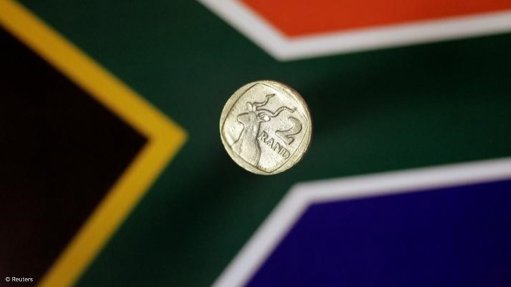South Africa urged to increase pumped storage capacity
It is imperative that South Africa immediately start increasing its pumped storage hydropower capacity, as this will take time and it is becoming increasingly important as the just energy transition proceeds.
Pumped storage is needed as solar and wind energy resources expand, South African Academy of Engineering (SAAE) fellow Professor Mike Muller said during an Academy of Science of South Africa (ASSAf) and SAAE webinar held on September 4, titled ‘How pumped storage hydropower can support South Africa’s energy transition’.
Muller pointed out that the country already had credible pumped storage capacity, with major pumped storage stations equating to 2 912 MW of total pumped storage currently.
Outlining some projects, SAAE honorary fellow Dr Mike Shand said the City of Cape Town’s 180 MW Steenbras pumped storage scheme, which was commissioned in 1979, was normally used to minimise the cost of buying power from State-owned utility Eskom during peak tariff periods and to mitigate the impacts of loadshedding on the city’s users.
He also mentioned that Eskom’s 400 MW Palmiet pumped storage scheme, which was commissioned in 1988, was operated in conjunction with the utility’s Koeberg nuclear power station and the electricity transmission from Mpumalanga.
Muller emphasised, however, that the current pumped storage capacity was insufficient, and that the country needed to expedite increasing it.
He explained that storage would be essential in the future to manage greater variability of intermittent sources and would also provide a range of other grid services.
He noted that the role of storage in the electricity system had already changed, to being more flexible and problem-oriented, and to help to manage the instability of old generators and the variability of new intermittent sources.
In terms of bolstering storage capacity, he pointed out that there needed to be a framework to fund and regulate this accordingly.
Muller elaborated that this regulatory framework would clarify the role of users, private service provers and grid operations; protect public interest; and mobilise private initiatives.
Muller emphasised that pumped storage would support structured supply restrictions.
He pointed out that pumped storage helped to moderate volatility and may also enable infrastructure savings, thereby reducing costs to users.
Muller added that pumped storage was cost effective and competitive and that it supported many ancillary grid services.
For the former, as society and users would carry the cost, Muller said the challenge was to achieve a cost-effective system for all users, fair allocation between these, protection from price variations, support for ancillary grid functions and wider social and economic benefits.
Muller also touched on the opposing perspective of pumped storage in the energy transition, including opinions that storage was not a requisite if a diverse mix of flexible, lower-carbon power sources was employed.
He acknowledged that there were alternatives to storage, including over-investing in generation to ensure adequate availability; managing demand aggressively to match supply; and interlinking with other systems to increase diversity and supply options.
Article Enquiry
Email Article
Save Article
Feedback
To advertise email advertising@creamermedia.co.za or click here
Comments
Press Office
Announcements
What's On
Subscribe to improve your user experience...
Option 1 (equivalent of R125 a month):
Receive a weekly copy of Creamer Media's Engineering News & Mining Weekly magazine
(print copy for those in South Africa and e-magazine for those outside of South Africa)
Receive daily email newsletters
Access to full search results
Access archive of magazine back copies
Access to Projects in Progress
Access to ONE Research Report of your choice in PDF format
Option 2 (equivalent of R375 a month):
All benefits from Option 1
PLUS
Access to Creamer Media's Research Channel Africa for ALL Research Reports, in PDF format, on various industrial and mining sectors
including Electricity; Water; Energy Transition; Hydrogen; Roads, Rail and Ports; Coal; Gold; Platinum; Battery Metals; etc.
Already a subscriber?
Forgotten your password?
Receive weekly copy of Creamer Media's Engineering News & Mining Weekly magazine (print copy for those in South Africa and e-magazine for those outside of South Africa)
➕
Recieve daily email newsletters
➕
Access to full search results
➕
Access archive of magazine back copies
➕
Access to Projects in Progress
➕
Access to ONE Research Report of your choice in PDF format
RESEARCH CHANNEL AFRICA
R4500 (equivalent of R375 a month)
SUBSCRIBEAll benefits from Option 1
➕
Access to Creamer Media's Research Channel Africa for ALL Research Reports on various industrial and mining sectors, in PDF format, including on:
Electricity
➕
Water
➕
Energy Transition
➕
Hydrogen
➕
Roads, Rail and Ports
➕
Coal
➕
Gold
➕
Platinum
➕
Battery Metals
➕
etc.
Receive all benefits from Option 1 or Option 2 delivered to numerous people at your company
➕
Multiple User names and Passwords for simultaneous log-ins
➕
Intranet integration access to all in your organisation

















